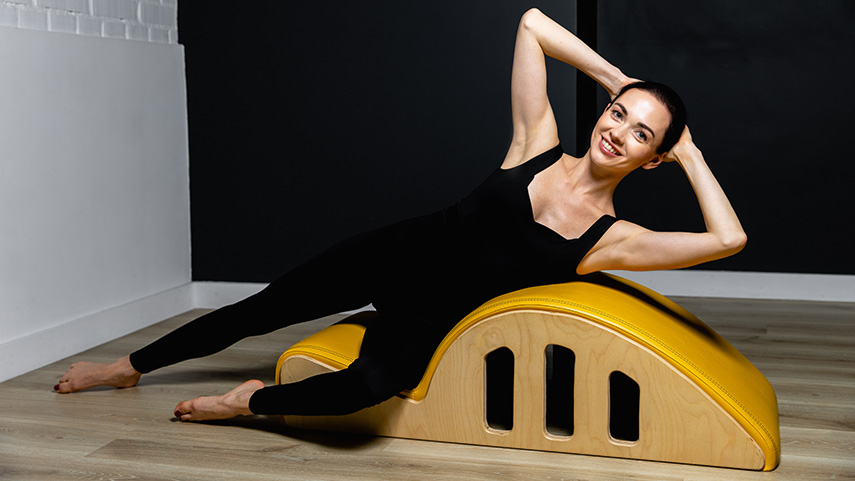Enhance Your Performance: How Pilates Complements Other Sports
Pilates and Martial Arts: A Perfect Pairing
Martial arts, boxing, and other combat sports require a unique combination of power, agility, and control. To succeed in these disciplines, athletes must have a strong core, excellent body awareness, and flexibility. Pilates addresses these needs directly, making it an ideal companion to combat training.
- Core Strength for Stability
In martial arts, whether it’s karate, Brazilian jiu-jitsu, or boxing, power originates from the core. Punches, kicks, and even defensive movements rely on a stable core to generate force and maintain balance. Pilates is known for its emphasis on core stability, particularly in exercises like the “Plank” or “The Hundred,” which work the deep abdominal muscles that support and protect the spine. This core strength is crucial for martial artists who need to maintain their form while executing complex moves. - Flexibility for Improved Range of Motion
Flexibility is another essential component in combat sports. High kicks, quick pivots, and defensive dodges all require a wide range of motion in the hips, shoulders, and spine. Pilates exercises like “Spine Stretch Forward” and “Leg Circles” focus on lengthening the muscles, improving flexibility, and ensuring that the body moves smoothly and without restriction. Increased flexibility reduces the risk of muscle strains and joint injuries, which can be common in high-intensity sports like martial arts. - Mind-Body Connection for Focus
One of the key principles of Pilates is the development of a strong mind-body connection. Through controlled movements and focused breathing, Pilates teaches athletes how to remain calm, centered, and fully present in their bodies. For martial artists, this translates to improved focus during training or competitions. The ability to stay calm and in control, even under pressure, can be the difference between success and failure in combat sports.
How Pilates Complements Running and Cycling
Endurance athletes like runners and cyclists can also greatly benefit from incorporating Pilates into their training. While these sports primarily target the legs and cardiovascular system, they can sometimes neglect the core, flexibility, and upper body strength—all areas that Pilates targets.
- Posture and Alignment for Efficient Movement
Running and cycling require repetitive movements that can lead to postural imbalances over time. For example, many runners develop tight hip flexors, while cyclists often suffer from rounded shoulders due to spending long hours hunched over handlebars. Pilates helps correct these imbalances by focusing on posture and body alignment. Exercises like “Shoulder Bridge” and “Chest Expansion” strengthen the muscles that support proper posture, making it easier to maintain good form throughout a race or ride. - Core Stability for Injury Prevention
A strong core is essential for endurance athletes, as it supports the lower back and reduces the risk of injuries related to overuse or improper mechanics. Pilates targets the deep muscles of the abdomen and lower back, building a stable foundation that helps athletes move efficiently and prevent injuries. Exercises like the “Pelvic Curl” or “Roll-Up” engage the entire core, improving both strength and stability. - Recovery and Flexibility
Pilates also serves as an excellent recovery tool for athletes who log a lot of miles or spend long hours training. Stretching and gentle movements found in Pilates routines help to release muscle tension, increase blood flow, and improve flexibility. This not only aids in recovery but also helps athletes maintain long-term mobility, reducing the chances of injury due to muscle tightness or restricted range of motion.
The Benefits of Pilates for Strength Sports: Weightlifting and CrossFit
Weightlifting and CrossFit require not only raw strength but also balance, mobility, and core stability. While these sports emphasize strength training, they can sometimes lead to muscle imbalances, tightness, or even overuse injuries. Pilates is a great complement to these activities, as it provides the mobility and stability that strength athletes need to perform at their best.
- Mobility and Flexibility for Injury Prevention
Lifting heavy weights requires a full range of motion in the joints, particularly the hips, shoulders, and spine. However, many strength athletes struggle with flexibility, which can lead to compensation patterns and increased injury risk. Pilates exercises like “Spine Twist” and “Leg Stretch Series” target the major muscle groups and improve mobility, making it easier to perform lifts with proper form and reduce the risk of injury. - Core Engagement for Better Lifts
In weightlifting, core stability is key to executing movements like squats, deadlifts, and overhead presses. A weak core can lead to poor form, back pain, and reduced performance. Pilates helps strengthen the deep core muscles that support the spine and pelvis, providing a solid foundation for heavy lifts. By incorporating Pilates into their routine, strength athletes can improve their lifting technique, reduce the risk of injury, and increase overall strength. - Balanced Strength Development
Pilates focuses on balanced muscle development, ensuring that no muscle group becomes overworked or neglected. This is particularly important for strength athletes who often focus on specific muscle groups during their workouts. Pilates ensures that all the muscles work in harmony, helping to prevent imbalances that can lead to injury or decreased performance.






